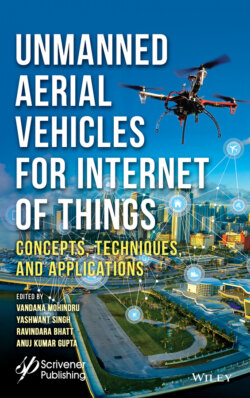Читать книгу Unmanned Aerial Vehicles for Internet of Things (IoT) - Группа авторов - Страница 54
2.2.2 UAV-Assisted Cellular Network Planning and Provisioning
ОглавлениеNetwork planning is more challenging in the case of UAV assisted cellular network. Parameters such as mobility, line of sight interference, energy constraints, and wireless backhaul connectivity have to be considered while planning such networks. The network needs to be planned taking into consideration the LoS interference between numbers of UAV-UE in the uplink connections. The BS in UAV assisted networks should be able to offer 3D communication coverage as the UAV-UEs are located at heights greater than the conventional BS antenna heights. The types of antennas at the ground stations involved in the UAV-UE in downlink communication need to be redesigned to provide wider coverage over the sky. The characteristics of the channel between UAV and BS are different from the channels of conventional terrestrial systems, as strong LoS links exist in this scenario. Such strong communications links result in efficient communication between UAV and the associated BS but also poses the threat of inter-cell interference from adjacent but non-associated BSs, in scenarios having both aerial and terrestrial UEs [47]. One also needs to consider the signaling and overhead involved in such networks due to the mobility feature of the UAVs. Studies carried out by researchers and presented in Refs. [18, 20, 48–50] focuses on problems like user association, backhaul connectivity, optimization of the number of UAVs that should be deployed in a network, placement of UAVs etc. Researchers have thrived to prove that optimal planning of UAV assisted cellular networks would require exhaustive work to be carried out to achieve an enhancement in throughput, reduction in delay, reduction of signaling overheads, reduction in interference in case of multiple UAV scenarios, less operational cost, reduced energy consumption, better effective interference mitigation techniques to deal with UAV-BS channel, techniques for supporting asymmetric UAV traffic requirements and so on.
